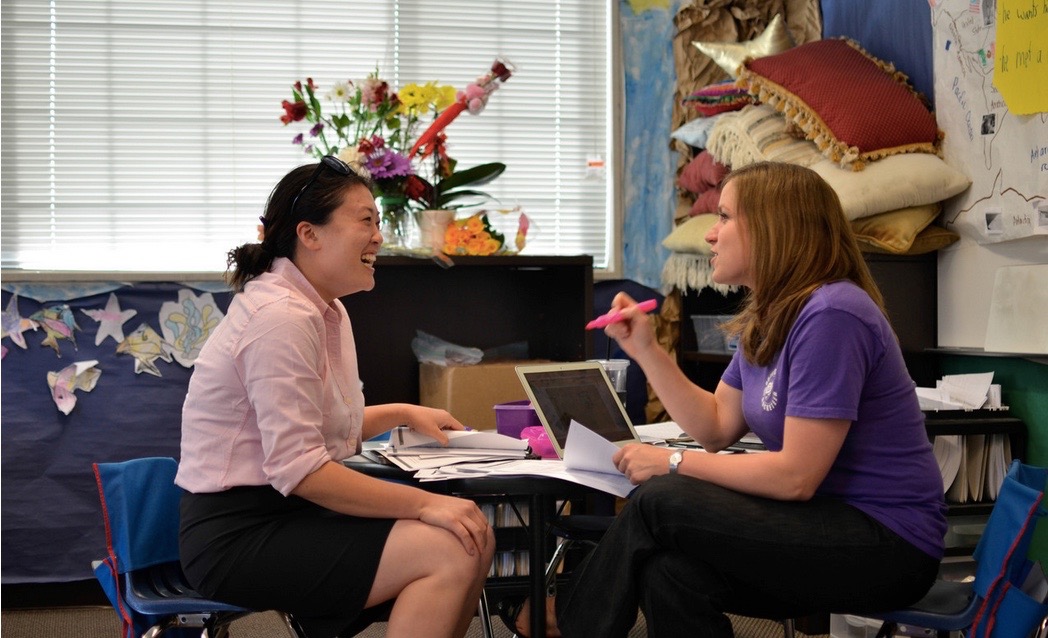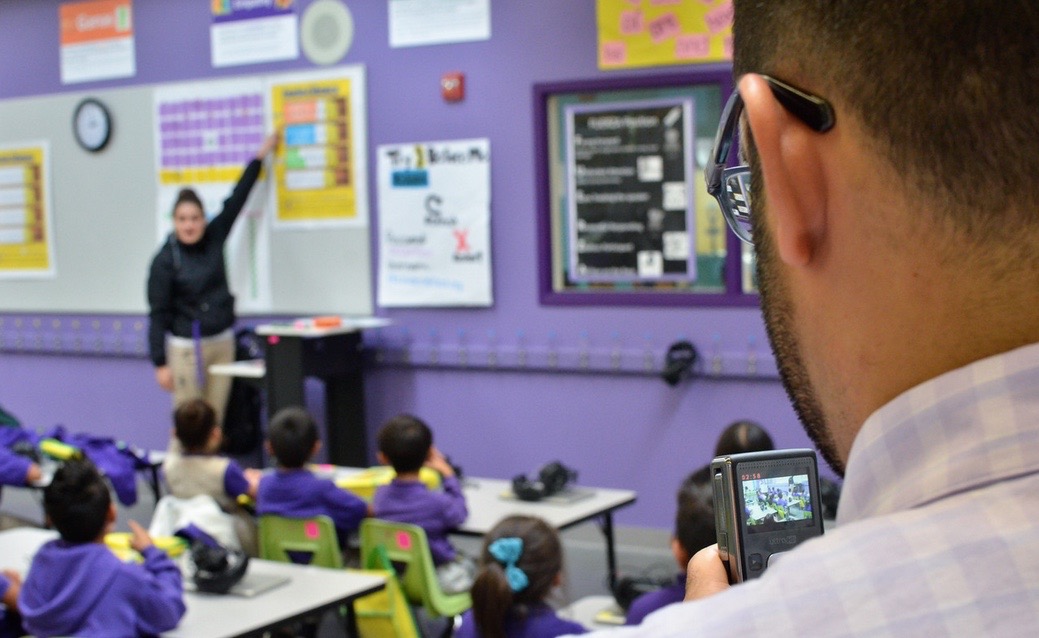
Watch Your Language: How to Talk so Teachers Actually Listen
by Kenneth McKee and Emily Davis Literacy Coach, Buncombe County Schools Program Director, Santa Cruz/Silicon Valley New Teacher Project
Build a Partnership
Coaching shouldn’t be an adversarial endeavor, but when coaching relationships fail, it is often because the coach feels the need to tell the other person what to do. Successful coaches, on the other hand, work hard to form partnerships with the teachers they coach. To do so, they use a few deliberate coaching moves:
- Use the language of “we.” For example, instead of saying, “You should focus on student voice in the classroom,” they might say, “We could start with looking at what students say in small groups.”
- Utilize third points. Instead of telling the teacher what you saw or making suggestions for strategies she should use, try putting a third point, such as a classroom data set, the teacher’s goals or an article in front of both of you as something to explore together.
These coaching moves may feel subtle, but they move the relationship from one that could easily become “me vs. you” to that of us as a team. The result is a strong partnership that the teacher trusts will help him or her to try anything with the help of a thoughtful and supportive colleague.
Master the Art of Questioning

Teacher coaching takes on many forms at Rocketship, including building positive and trusting relationships.
Many of the struggles we have with communication stem from jumping to conclusions. We have all experienced instances where what we believed we said and what the other person believed they heard don’t align. Questioning improves communication because it allows us to collect information in order to better understand others. Questioning plays an important role in coaching because it allows us to better understand what a teacher knows, believes and thinks. We can then determine what the teacher needs and where we can most usefully enter the conversation. For example, if a teacher states that a new practice doesn’t work, rather than immediately giving advice or defending the practice, it may be better to say: “Tell me more. Can you give me some examples?” In essence, this line of questioning places you in a partnership position where the two of you can work collaboratively to solve problems. In addition, we should ask questions in objective ways. For example, when working with a teacher, a question such as, “Where are you struggling?” can easily place the teacher on the defensive. The question itself may imply that the teacher is incompetent or at fault for a situation. Reframing that question as, “Where are your students struggling?” can result in a more open and productive discussion. It also focuses the conversation on what’s most important — the progress of our students.
Recognize the Power Dynamics
An unspoken issue that can impact our ability to connect with teachers is a failure to recognize power dynamics that may exist between us. Most of us want to believe we are on equal footing with teachers we coach and, as a result, we approach teachers from that stance. What happens when we fail to recognize this power issue is that some teachers feel they cannot say no to or disagree with our suggestions. Teachers nod and agree, but no change happens. This is frustrating for the coach and for the teacher. To avoid this challenge, we need to: 1) notice and name the power issue for ourselves and 2) consciously frame suggestions and feedback in open and inviting ways. For example, instead of suggesting one specify strategy, try saying “Here are a few ideas I have seen others employ in this situation. Might one of these work in your classroom?” The difference between the first and second option is a sense of choice. It also empowers the teacher to be the expert on his or her class. The difference may seem subtle but results in a significantly different outcome. Most of all, avoid the phrase, “When I was a teacher, I….” or “What I do in this circumstance is…” which suggests you know THE answer. The teacher’s keen awareness of the power dynamic leads him to nod and agree even when he doesn’t because the teacher feels he can’t say, “That doesn’t work for me,” as that would put him at odds with you. Recognizing the power dynamic and using language that encourages teacher autonomy will result in much more fruitful conversations.
Eliminate All-or-Nothing Statements
Time and time again, teachers say that their biggest pet peeve about school leaders is their use of “all-or nothing” statements. As an illustration, during a staff meeting a school principal might say, “No one is doing attendance accurately.” That statement is probably not true. Surely, some teachers are doing it correctly, and they now feel their thoroughness has gone unnoticed. Others may not know how to take attendance correctly; however, the negative comment makes them afraid to ask for help. The same goes for all-or-nothing statements from coaches and teacher-leaders as well. A teacher leader, while collaborating with a colleague, might say something like, “Morphology is the best way to teach vocabulary.” Although morphology has many merits, the best instruction depends on the students and the content. All-or-nothing statements undermine the knowledge and skills of our teachers. In addition, they can usually be proven wrong, which discredits the school leader making the statements and discourages conversations that can improve the school as a whole.
Change happens one conversation at a time. But to make the most of these conversations, educators working in a coaching role need to watch their language and talk so teachers will listen.
This post was originally published on SmartBlog on Education. It has been republished here with permission from the authors.
Kenneth McKee is a high-school literacy coach for Buncombe County Schools in Asheville, N.C. His interests include teacher leadership, disciplinary literacies, and partnership approaches to instructional coaching. He is a 2014 ASCD Emerging Leader. Connect with him on his blog (kennycmckee.com) or on Twitter (@kennycmckee).
Emily L. Davis, Ph.D., is the New Teacher Center Program Director for Santa Cruz/Silicon Valley New Teacher Project in California. She is the author of Making Mentoring Work as well as numerous articles on high quality induction. Emily is a 2014 ASCD Emerging Leader. Connect with her on Twitter (@mentorEmily).
Published on July 20, 2015
Read more stories about: Most Popular Stories, Teacher Experience.


